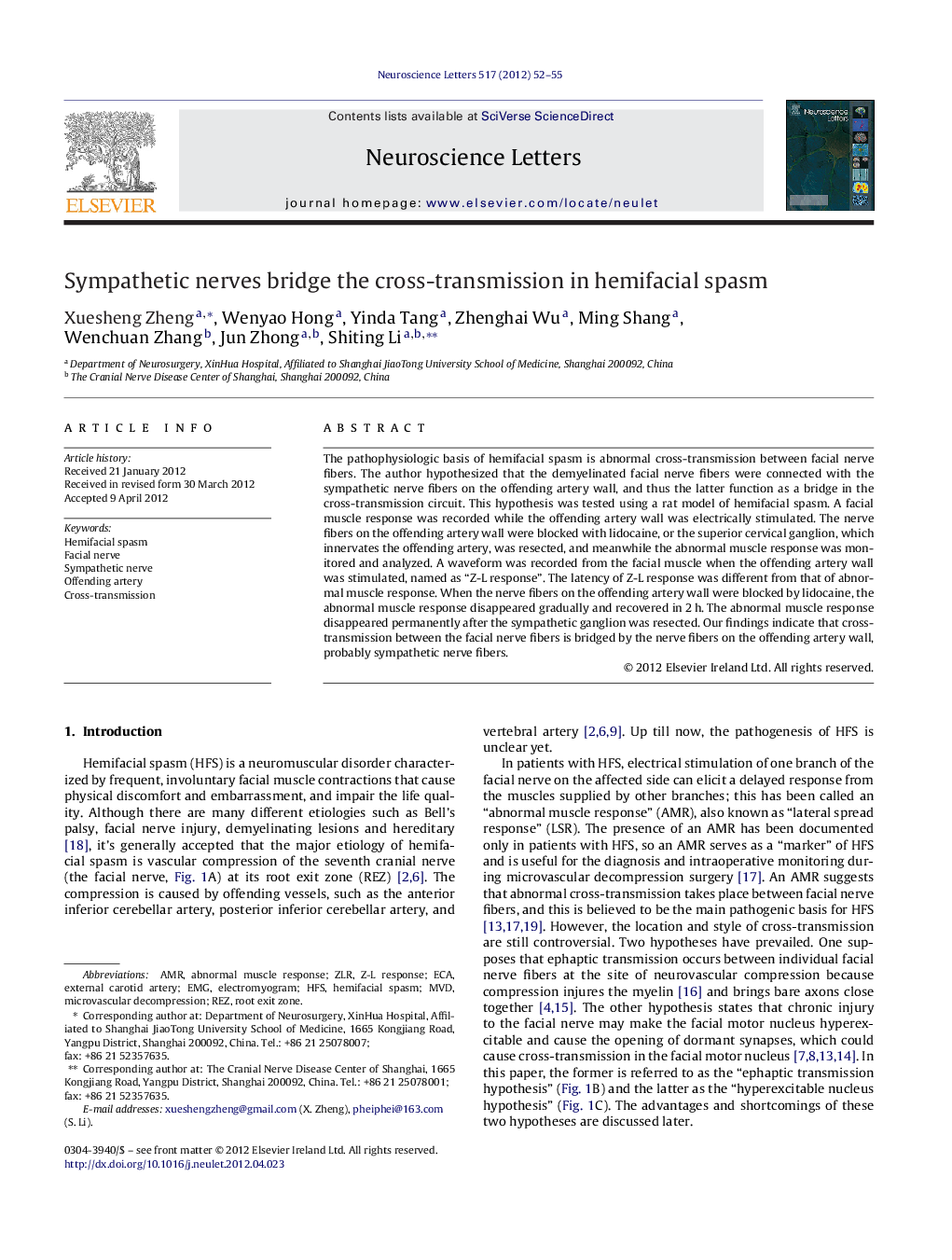| Article ID | Journal | Published Year | Pages | File Type |
|---|---|---|---|---|
| 4344549 | Neuroscience Letters | 2012 | 4 Pages |
The pathophysiologic basis of hemifacial spasm is abnormal cross-transmission between facial nerve fibers. The author hypothesized that the demyelinated facial nerve fibers were connected with the sympathetic nerve fibers on the offending artery wall, and thus the latter function as a bridge in the cross-transmission circuit. This hypothesis was tested using a rat model of hemifacial spasm. A facial muscle response was recorded while the offending artery wall was electrically stimulated. The nerve fibers on the offending artery wall were blocked with lidocaine, or the superior cervical ganglion, which innervates the offending artery, was resected, and meanwhile the abnormal muscle response was monitored and analyzed. A waveform was recorded from the facial muscle when the offending artery wall was stimulated, named as “Z-L response”. The latency of Z-L response was different from that of abnormal muscle response. When the nerve fibers on the offending artery wall were blocked by lidocaine, the abnormal muscle response disappeared gradually and recovered in 2 h. The abnormal muscle response disappeared permanently after the sympathetic ganglion was resected. Our findings indicate that cross-transmission between the facial nerve fibers is bridged by the nerve fibers on the offending artery wall, probably sympathetic nerve fibers.
► Sympathetic bridge in the cross-transmission circuit of hemifacial spasm. ► A novel waveform: ZLR. A facial muscle response while stimulate offending artery. ► Blocking the sympathetic nerve fibers, or resecting the ganglion, AMR disappeared.
